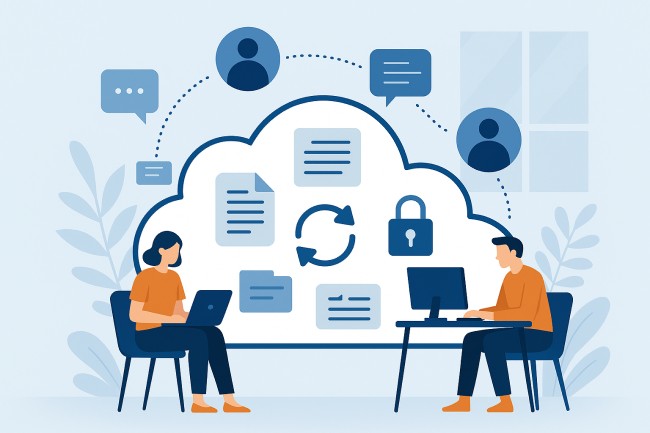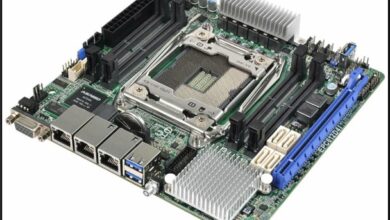How Collaborative Cloud Platforms are changing In-Home and Remote Businesses.

Working remotely has become a trend that is here to stay. It has made it an inseparable part of the way contemporary firms work, recruit talents, and coordinate their everyday activities. With the increasing trends of home based and remote businesses, collaborative cloud systems are becoming very important in facilitating efficiency, communication and workflow organization. Business solutions such as SharePoint design services for businesses assist companies to centralize files, make teamwork processes smoother, and ensure a consistent working environment even when its staff work in various cities or in different time zones.
Remote Work: The New Landscape.
Prior to cloud collaboration tools, remote work could frequently imply transferring files back and forth by using email, conflicting with different versions, and having a hard time maintaining clear communication. Remote businesses today are greatly dependent on cloud computing systems, which offer real-time access, common digital workspace and centralized data storage. This change has enabled organizations to go global, cut the cost of overheads in their offices, and give their workforce a greater degree of flexibility.
The relevance of Centralized Workspaces.
A centralized online working folder will make sure that no one will miss an opportunity to have access to the necessary resources, including documents, project files, onboarding literature, and constant changes. Bringing all of the assets to a single secure platform, businesses do not experience data scattered out and inconsistency in the information flow.
Cloud collaboration systems offer:
One place of truth of files.
Real-time co-editing
Easy version control
User role based access control.
Cloud repair to ensure loss prevention.
The features make the work less confusing and assist teams in working productively rather than looking for information.
Increased Communication and Cooperation.
The core of business operations that are remote is communication. Cloud-based solutions combine chat, video conferencing, task boards and document collaboration to enable teams to collaborate effectively. The employees can communicate and perform work in a single connected environment, as opposed to using different apps.
This leads to:
Faster decision making
Clearer task management
Improved accountability
Fewer project cycles delays.
Once communication is made formal and reachable, the level of productivity naturally increases.
Scalability in Growing Companies.
Home businesses may develop speedily, with small groups beginning with a small remote department and increasing to bigger ones. Joint cloud systems can be expanded without expensive IT expansion. Permission, storage, as well as workflow structures can easily grow with the addition of more employees.
The system is stable and flexible whether a team is composed of three individuals or fifty individuals.
Data Protection and Security.
Security is one of the largest issues facing remote businesses when employees work on different networks and personal equipment. Cloud platforms have a high level of encryption and access control as well as audit logs to ensure that company data is secure. Such security is hard to obtain using the conventional storage solutions.
Businesses can ensure:
Safe document sharing
Controlled data access
Establish safe cooperation with the external partners.
This develops trust within and with the clients.
SharePoint in Transforming Remote Work.
Microsoft SharePoint is a collaboration platform that has gained popularity among the most popular platforms due to integration of communication, document management and workflow automation in a single ecosystem. Nevertheless, each company has special requirements, that is why a lot of companies seek SharePoint design services to tailor the solution to their framework and objectives.
Personalized SharePoint can deliver:
Tailored dashboards
Automated document flows
Customized team sites
Secure client portals
Digitally branded workplaces.
SharePoint is not only a tool, but a digital headquarters of an external or hybrid corporation with proper design.
Collaboration Tools are Culture-centric, not task-centric.
Remote businesses also tend to have a problem with cultural, morale, and group identity of the team. Cultures Collaborative cloud systems can facilitate the culture-building process, providing the employees with the opportunity to interact in a more informal way and exchange updates, acknowledge successes, and other social or team-building activities via the Web.
This makes remote employees feel that they are connected, valued and engaged at the workplace.
Conclusion
The shared cloud services are redefining the functionality of businesses that are based at home or remotely. They simplify communications, concentrate processes, improve security and allow growth to scale. Business solutions such as well-designed SharePoint design services offer flexibility and customization that can enable contemporary teams to be effective at work regardless of their whereabouts.
Cloud collaboration tools will be the backbone to a robust, effective, and connected digital workplace as remote and hybrid work models keep becoming more popular in the global workplace.



